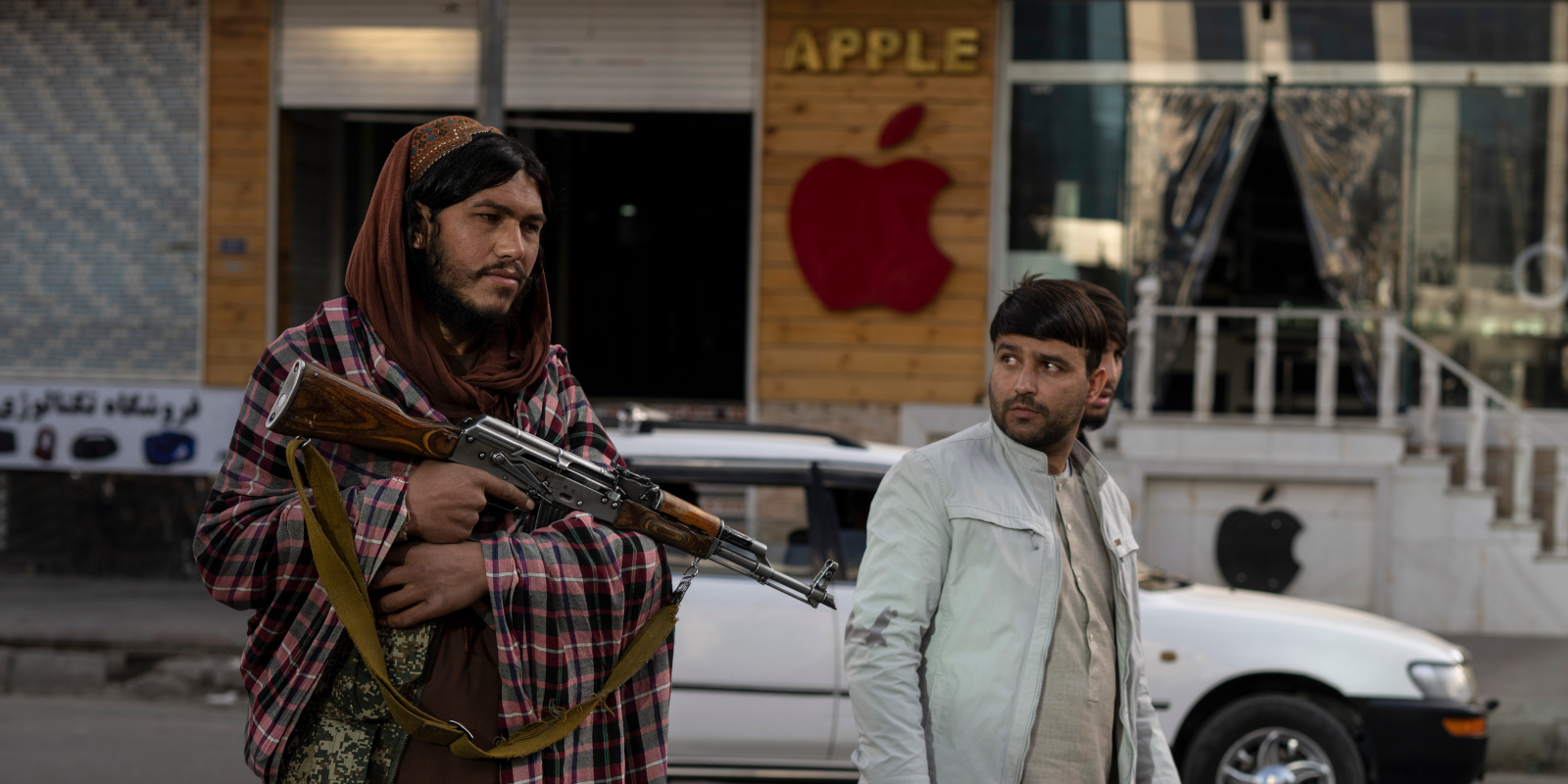Today’s Hub Dialogue is with national security and counter-terrorism expert Jessica Davis. She spent 17 years working for several national security departments and agencies in Canada’s federal government and now leads a private-sector intelligence firm. Her new book, Illicit Money: Financing Terrorism in the Twenty-First Century, is a well-researched and fascinating insight into the world of terrorist financing.
This conversation has been revised and edited for length and clarity.
Illicit money
SEAN SPEER: Jessica Davis, thank you so much for joining us for today’s Hub Dialogue.
JESSICA DAVIS: It’s a pleasure to be here.
SEAN SPEER: Let’s start with a scene-setter: what’s the importance of illicit financing for terrorism around the world? What do terrorists and terrorist organizations need money for?
JESSICA DAVIS: Oh, we’re starting with the easy questions. In terms of what they need, terrorists need money for literally everything. When you think about terrorist organizational needs, they need money for the same kinds of things that we need money for. They need money for shelter, for food, for all basic quotidian needs. But then, of course, they’ve got other needs on top of that, as well, which are weapons, propaganda, and other things directly related to their terrorist activities. They actually have a really long expenditures list.
This means that they need to look for money from a wide variety of different donors and supporters to finance their operations. One of the challenges they really face is that since 9/11, this has become an area of increased scrutiny. States have been encouraged to criminalize terrorist financing and stop the flow of money to terrorist organizations. So, they’re really battling this international system.
SEAN SPEER: Are there any estimates, Jessica, on the magnitude of terrorist financing? Obviously, by definition, it’s a hard number to pin down, but I’d just be fascinated to know if there’s any sense of the magnitude of terrorist financing around the world?
JESSICA DAVIS: There are all kinds of estimates. I think that the vast majority of them are really unreliable: most of the estimates that we see are going to be things that are exclusively about terrorist revenues which can be incomplete and misleading. So, if I say that I make $100,000, do I take home $100,000? Well, no, of course, not. I have various expenses including taxes so my net profit isn’t $100,000. I don’t have that kind of money to dedicate to whatever extracurricular activities I want. The same thing is true for terrorists. The vast majority of the numbers that you’ll see in the media are going to grossly overestimate the amount of money that terrorist actors actually have to contribute to terrorist activity.
So, those numbers are really difficult. They’re misleading. And frankly, I think that we just don’t really have a good sense of what we’re talking about there. They’re also very politicized, so it’s very common for states to talk about the hundreds of millions of dollars for particular terrorist organizations in an effort to get additional foreign assistance, technical assistance, all of those kinds of things. It’s really unreliable and really uncertain.
Sources of financing
SEAN SPEER: You alluded to it a little bit, but let’s tease it out. What are the typical sources of terrorist financing, and by what means do terrorist organizations raise, access, and distribute funds?
JESSICA DAVIS: So, I want to specify here that when I’m talking about this, I’m talking about it from both an organizational and an operational level. So, I’m talking about terrorist groups, but also the individuals themselves that are involved in terrorist activities because, a little side note about this, terrorist organizations increasingly don’t actually fund a lot of terrorist attacks anymore; those are often self-funded. So, broadly speaking, terrorist actors, at all levels, are raising funds through donations. Those could be from state sponsorship to funding from other terrorist organizations. We’ve seen groups like the Islamic State sending money to their affiliates and other parts of the world. Al Qaeda has done the same thing.
Terrorist actors also raise money from what I like to call identity-based support networks. People who have some sort of identity affiliation with them feel compelled to donate money to their cause or to their activities. There’s money that terrorists also raise from things like criminal activities, and this includes kidnapping for ransom and fraud. They also can divert funds from charitable organizations and from legitimate businesses. I think the easiest way to think about this is really in terms of the economic activity in the area, where the terrorist actor is operating. Whatever that economic activity is, they will try to find ways to raise money from it.
SEAN SPEER: One of the most fascinating insights for me from your book is the growing use of technology. You write, for instance, about eBay as a place where terrorist organizations and individual terrorists may sell wares for the purposes of financing terrorist activities. How has technology changed the way in which terrorists and terrorist organizations raise access and distribute funds?
JESSICA DAVIS: Yeah, the technology side of things is really interesting. In terms of the technology, one of the things that I think is probably less well-understood is that terrorist actors are actually acquiring a lot of their materials for their attacks online. So, through things like eBay or through Amazon.
They’re actually purchasing components for devices. In some cases, they’re purchasing things like drones or other items that are not necessarily in and of themselves a weapon, but that can be weaponized or become components for weapons. A lot of that activity does happen online.
They also sell some of their propaganda online. And then there’s a whole piece here around extremist financiers and extremist propagandists. So, maybe people who haven’t necessarily crossed the threshold into terrorist activity, but are promoting forms of neo-Nazism or violence associated with anti-government ideologies—who in and of themselves are not quite terrorist, but certainly trade in extremism—they’re acquiring money from their supporters and using that to push up more and more propaganda. All of this, of course, is happening online. It’s happening in new streaming platforms; it’s happening in gaming platforms. They’re using financial technologies to move that money, including cryptocurrency. There’s a whole space in which terrorists are exploiting technology for financing.
How to counter this financing
SEAN SPEER: Those are terrific answers to give the reader a good sense of the overall context and some of the different means and purposes for terrorist financing.
Let’s talk a bit about how policymakers ought to think about these issues. From a counterterrorism perspective, how should we think about terrorist financing? Should we place more intelligence efforts on choking off the flow of money? Or should we instead prioritize addressing the ideologies and broader sociopolitical conditions that produce terrorism?
JESSICA DAVIS: This is sort of the perennial question, I think. There are three different things that I would say about this. The first one is there are definitely things that we can do to address the underlying factors that create permissive conditions for terrorism and extremism, but these are not easy solutions. Things like alleviating poverty; alleviating inequality in societies; trying to minimize biases that allow extremist ideologies to take hold in a society. I’m less of a convert in terms of counter-radicalization activities. I don’t think that there’s been a lot of really good evidence in terms of what kind of programs can be broadly applied. There have been some limited successes in very specific contexts. So, I wouldn’t necessarily say that that’s where I’d like to see the government spending a lot of money. I think it’s a necessary piece in particular contexts, but not a broad piece in terms of how terrorist financing and counterterrorist financing should be included.
I think there are really two sides to this. I think that counterterrorism practitioners really need to understand the importance of financing. For the execution of attacks, most attacks require some sort of financial resource. The vast majority that I’ve studied—I looked at 50 odd cases for this book and I’ve done many more in my career—have some sort of financial component. And if they don’t have a cost associated with them, they still have a financial intelligence component. There are still generally activities that the individuals who are looking to conduct attacks undertake prior to their attack. It could be something as simple as closing a bank account, applying for a loan so that a child was well looked after. These are real-life examples, of course. Those are the financial activities that maybe aren’t necessarily directly related to the attack itself, but they’re preparatory behaviours so that people can get their lives in order, and they have a financial component. So, for counterterrorism practitioners, it’s important to understand both the financing of the activity and the organization and the financial intelligence that comes from a lot of those counterterrorist financing policies that we put in place over the last 20 years.
SEAN SPEER: How can domestic governments strengthen their policy regimes with respect to terrorist financing and indeed some of these separate yet related financial behaviours without inadvertently preferencing large incumbent firms and potentially harming smaller FinTech companies or other forms of innovation?
I hear anecdotally, for instance, that the large banks now have massive anti-money laundering departments that smaller, upstart companies simply can’t replicate. How should policymakers think about the trade-offs between addressing the real challenges with terrorist financing without it becoming a tool of anti-competitiveness within their own domestic markets?
JESSICA DAVIS: There are two elements in your question that I think are quite interesting. The first one, of course, is the bank issue. I have less sympathy towards our highly profitable banks in terms of their complaints about the cost of counter-terrorist financing and anti-money laundering requirements. I think that in a lot of countries, they’ve gotten away with an awful lot in terms of noncompliance; not necessarily deliberately, but in terms of just neglect. There is a move in a number of countries, particularly led by the United States and the United Kingdom, to really increase the fines to encourage compliance and, in some cases, hold some executives personally criminally responsible for the lapses in anti-money laundering, counter-terrorist financing in really egregious situations. That is where the policy conversation is going in a lot of places.
The second piece of what you’re asking that’s really interesting is how to ensure compliance on these very important issues, but not stifle financial technology development. I think this is a bit of a difficult space, because the ethos is very much about move quickly, break things, and fix them later. I think that what we really need to be moving towards is a compliance by design perspective. So, when financial technology companies are starting to get off the ground, and starting to think about the kind of services they want to be providing, they need to be integrating compliance from the get-go, not tackling it afterward. It’s a fundamental requirement of our legal system, and it will remain that way for a long time. And if they do it from the frontend, there will be a lot less hassle on the backend.
Terrorist threats
SEAN SPEER: I would be remiss, Jessica, if I didn’t take the opportunity, given your experience and expertise, to ask you some kind of general questions about the state of terrorism in the world. What does the return of the Taliban in Afghanistan mean for global terrorism? How much risk in your view is there that Afghanistan once again becomes home to terrorist plots targeting Canada and other Western societies?
JESSICA DAVIS: The re-rise of the Taliban really can’t be understated in terms of how it affects the terrorism threat and how it affects the financing piece as well. So, with the Taliban takeover of Afghanistan, now you really have a terrorist organization that is in charge of a country. So, it means that it has access to all of the resources of that country for its financing needs. This means that a lot of sanctions will be less effective in terms of really hitting the leadership of that organization. But at the same time, when you look at Afghanistan and its economy, and obviously the economic crisis, you can see that there are some very serious limitations for the Taliban in terms of being able to raise money from the economic activity in its area of control. In the short term, I think is interesting because you’ve got a number of other sorts of smaller terrorist organizations operating in and around Afghanistan that are in direct opposition to the group.
So, we’re already starting to see those clashes between the Islamic State Khorasan province (the ISIL affiliate in Afghanistan) and the Taliban. We’ve seen a number of attacks from ISIL. They’re sort of challenging the Taliban for control. And this is also putting pressure on ISIL-KP financially because it means that the Taliban is trying to drive them out of the areas where they’ve been able to conduct extortion activities or fundraising activities that have a wide variety. And so, you really have this cat and mouse game that’s happening that I think, to a certain extent, is keeping the lid on external operations for a little while.
But I’m not sure how long that will or can last. Terrorist groups can be very unpredictable in terms of their strategic planning. And, at some point in time, even if they’re under significant pressure, a group like ISIL in Afghanistan could choose to try to conduct attacks abroad to encourage more donations, more support, more recruitment, etc. So, it is a very serious situation, and I think the most serious problem right now is for the Afghan population who are just in this terrible situation and with no real solution in sight.
SEAN SPEER: Final question: you alluded earlier that terrorism and extremist ideologies cover a wide spectrum. And we’ve seen in different security and security intelligence assessments from our own agencies, as well as other agencies around the world, prioritizing different types of terrorist and extremist ideologies at different times. Just from your expert point of view, at present, which forms of terrorism do you think Western security and intelligence agencies must be most focused on?
JESSICA DAVIS: Yeah, that’s a difficult one. Because, from the outside, we only have such a very limited picture in terms of what’s really happening in the extremism landscape. I think we’ve had a very overdue reorientation towards looking at what the Canadian government, of course, calls ideologically-motivated violent extremists. So those white supremacists, the neo-Nazis, the anti-government extremists, etc., because this has been an extremism threat that has now transitioned into a terrorism threat that’s gone unchecked for many, many years.
But that does not mean that the threat from groups like Al Qaeda, Islamic State, Hezbollah, have gone away. So, I think really what we’re looking at, in terms of a terrorism landscape right now, is a lot of diffuse threats that really are very difficult for security services to coalesce around in terms of countering those threats. Because if you have a dozen or two dozen disparate threats, you’re then stretching your resources across all of these different things, and they’re going to ebb and flow over time. And when one group or cell, or even individual, when they decide to take action on those extremist ideologies it’s really difficult to predict. So, I think it’s a very challenging security environment, and I don’t think that there’s really much of a hierarchy right now in terms of that threat.
SEAN SPEER: Well, this has just been a fascinating conversation. The book, of course, is Illicit Money: Financing Terrorism in the 21st Century. Jessica, congratulations on its publication, and we’ve been grateful to have some time to talk to you both about the book and draw on your more general expertise on these very important matters.
JESSICA DAVIS: Thank you so much. It was a really great conversation. Appreciate it.
Recommended for You

Patrick Luciani: From the courts of the Popes to Putin’s plans to challenge the West—Here are the top five books I reviewed last year

Migrants will flood Canada’s southern border and a tactical nuke will be used in war: The Hub’s can’t-miss predictions for 2025

Trump will be a lame duck and human trafficking will be a major problem: The Hub’s can’t-miss predictions for 2025

Thomas d’Aquino: A Christmas message for President-elect Donald Trump



